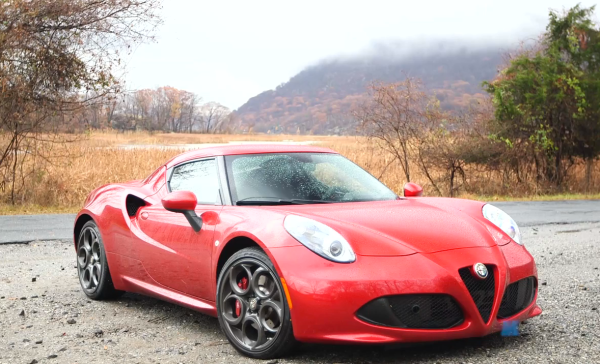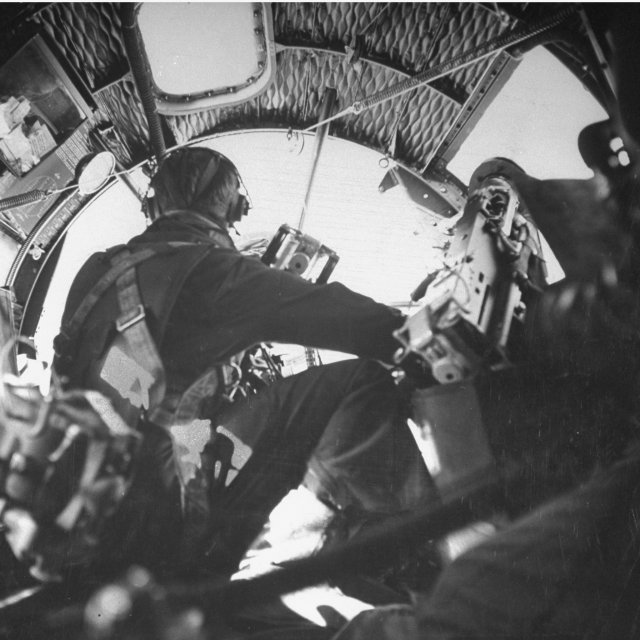New Alfa Romeo Is a Beauty and a Blast

The Alfa Romeo 4C isn’t a car so much as it is a Milanese fashion model on wheels.
A very, very, fast fashion model. I will admit to a certain amount of man drooling when this creature showed up. And I was not the only guy on the block with that reaction. What a looker: a swept-back, mid-engined beauty whose lineage dates back to Alfa Romeo's 33 Stradale supercar of the 1960s.
The 4C gets its curves from technology. It isn’t assembled so much as shaped from carbon fiber over an aluminum frame, which allowed the designers to devise the 4C’s sinuous looks. The Alfa is also fashion-model skinny, weighing in at about 2,500 pounds — some 1,000 lbs. less than the Jaguar F-type, for instance. The Alfa is also lighter on price than the F-Type: $53,900 vs. the F-Type’s $65,000; to get the baddest F-Type, the R model that matches the Alfa’s speed, it’s going to cost you $99,000 to open the door.
Alfa’s corporate masters at Fiat (it will be sold here by Fiat dealers) have been able to keep the 4C’s price relatively modest by creating a very basic animal. This thing comes with few accessories, and there aren’t a lot of toggles and knobs to play with. If you want the Jag’s ultra-plush, 14-power control racing chair with the inflatable side baffles — very nice in 90-mile-per-hour turns — you should expect to lay out 100 large. The Alfa driver’s seat slides up and back using an old-fashioned ratchet mechanism. The car is barely four feet tall, and given the size of the cockpit and my own 6-foot-2 frame, I had to push it all the way back to get my legs in. It reminds me of an ancient MG in that regard.
Understand that with the 4C you’re going to have to give up things along with weight. Like comfort. The car won’t coddle you. You’re four inches off the ground in a carbon tub, the suspension has no intention of making New York City’s potholes any softer, and the guy in charge of sound reduction at Alfa had the day off when this thing was designed. It’s loud, and turning up the radio just adds to it.
And if you’re looking for the latest in interactive accouterments, such as a touchscreen navigation system or voice-activated controls, the 4C laughs at you. It’s a sports car, not some Wi-Fi hotspot. There’s an input for your mobile phone in the form of a collection of loose wires stuffed into a sleeve below the glove compartment. Except that there is no glove compartment. Instead, there’s a slot on the back wall above the center console. It’s a very handy spot to store your speeding tickets.
There’s no backup camera, either, which is a shame because there’s basically no rear view. The engine is in the way. Nor is the peripheral vision all that great. The 4C is designed for fast forward. Don’t count on taking a long road trip in this thing, unless you travel very very light. The trunk space is ridiculously small, and there’s no storage beneath the hood.
All the 4C's shortcoming are quickly forgiven quickly once you start it up and the automotive aria that is sitting behind your head begins to sing. And this is not the fat lady singing, either. Even in the engine compartment, the 4C is slim : a turbo-tuned, in-line, four-cylinder power plant puts out a mere 237 horsepower. You might be tempted to snicker, given that the top-end F-Type is pumping out 550 hp and Chevy’s even faster Corvette muscles up to 460 hp. Keep in mind, though, that the new Ford Mustang is available in a four-cylinder version, and I’ve been on track with that Pony at 132 mph. The 4C, though, is so much lighter that its power-to-weight ratio is in the supercar class. Which means that if you touch the pedal, the response is, si, signore, and you are blowing past traffic in hilariously fast intervals.
What we‘re talking about is fun — knowing that whatever traffic is in your way will be out of your way on command. You do that with the pedal and the 4C’s dual clutch transmission. There’s a funky gear selection on the center console: R for reverse, and then a 1 for forward, as in drive. There’s also a button that lets you select automatic or the paddle shift, six-speed mode. (There’s no stick shift option.) In auto mode, there’s an interesting knock-down feature. If you’re in sixth gear and cruising, and decide you want to make a pass, the engine downshifts a gear to fifth to provide more torque.
Like most new sports cars, the 4C has a tunable ride. A three-mode toggle called D.N.A. lets you switch from normal driving mode (in which can get an admirable 28 miles per gallon combined, although you’ll need it with the 10-gallon tank) to an all-weather mode or to dynamic mode (and if you hold the switch in dynamic for five seconds, you'll engage the Alfa's race mode). The all-weather mode is designed to keep the wheels from spinning by not overresponding to the pedal while an anti-slip regulation (ASP) keeps brakes and engine in sync. Put it into dynamic, however, and all bets are off. The pedal response is reflexive, and gear shift times are reduced by 25%, according to the company. That's another way of saying that when you bang on the accelerator, the trip to 60 mph — which takes a shade over four seconds — feels nearly seamless.
That would not describe the steering, which lacks electronics, At slow speeds you have to pull the wheel to get the tires to come with you; forget about trying to parallel park. On the other hand, there’s an electronic torsion control that brakes the interior tire on turns so you’re getting optimum grip on the outside wheel. That means you can power through turns at will.
So how do you size up a car like the 4C? It’s impractical, not particularly comfortable, and rather loud. It has a lousy infotainment system and no trunk space. Then again, it’s flat-out gorgeous and race-car fast. It is both beauty and beast, and a wonderful one at that.
--
View an extended version of the Alfa Romeo 4C video on YouTube.

